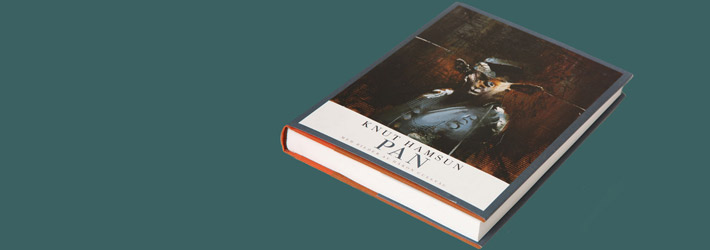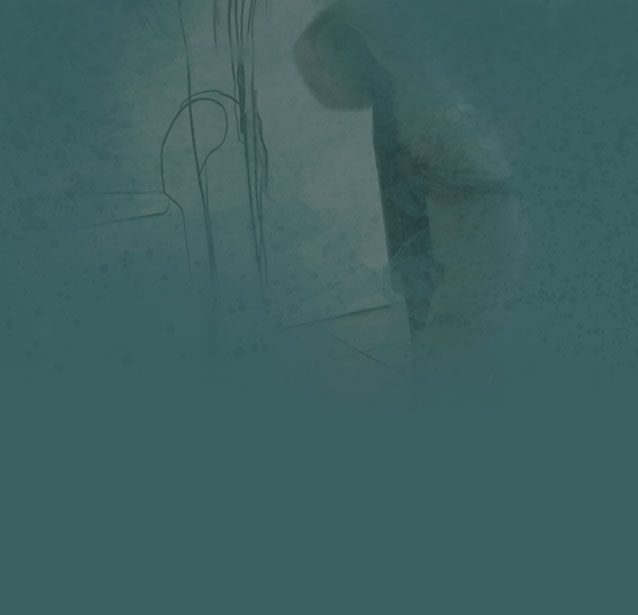Home

Knut Hamsun's novel Pan
Gullvåg’s first book-project was a jubilee-publication marking the centenary of the publication of Knut Hamsun’s novel Pan (1894). The publisher was Den norske bokklubben (1994). He also illustrated a French version of Pan, published by Calmann-Lévy, November 14, 1994, exactly the 100th birthday of the first publication.
This first illustration project came about rather indirectly, for Gullvåg had begun working with the Pan series on his own initiative already in 1991. It became a larger cycle of paintings, stretching into 1995. The Norwegian book club heard of the project and wanted to use it in their deluxe binding.
Hamsun’s novel Pan is about Lieutenant Thomas Glahn, who, in 1855, moves to a hunting cabin in Northern Norway. There he lives in harmony with nature and with his dog Æsop, not far from the village of Sirilund. Like Pan, the Greek god of the woods, Glahn keeps to himself, and nature provides what little he needs in order to sustain himself. Nature is a source of intense happiness. Yet Glahn’s romantic nature will be his downfall. After meeting the shopkeeper Mack’s daughter Edvarda, he manages to calm down again, but calm and happiness are displaced with jealousy. It is only too clear he does not belong at social gatherings with her friends, and this creates a deep cleft between them, resulting in fatal consequences.
As was mentioned, thorough preparation lies behind Gullvåg’s paintings. As well as studying the novel, he immersed himself in questions about the time the novel was written, among other things, the history of clothing and uniforms. He also travelled several times to Northern Norway to seek out the landscape Hamsun describes.
After achieving the insight he seeks, Gullvåg gives it time to mature, such that he can act as a free agent in relation to it. The developed paintings are thus also free, very personal interpretations of the material. The main focus is placed on the book’s central figures, whose portraits function on a number of levels simultaneously. He tries to create pictures representing another world, a balance between the impressions the persons have of each other, and how they actually look. All while, we are reminded that these are people from a fictive, literary dimension; this opens up for a surrealistic and symbolic pictorial language, where Edvarda is metamorphosed with the landscape, she is even portrayed with a bird’s nest on her head.
The pictures were exhibited in Trondhjem’s Art Society (now Trondheim Art Museum), Stenersen Museum in Oslo (1995), and Gallerie Vielle du Temple, in connection with the “Hamsun Days” in Paris (under the auspices of the Foreign Office).
HÅKON GULLVÅG © / TEXTS BY DANIEL JOHANSEN AND EVA FURSETH / SITE BY KLIPP OG LIM


















